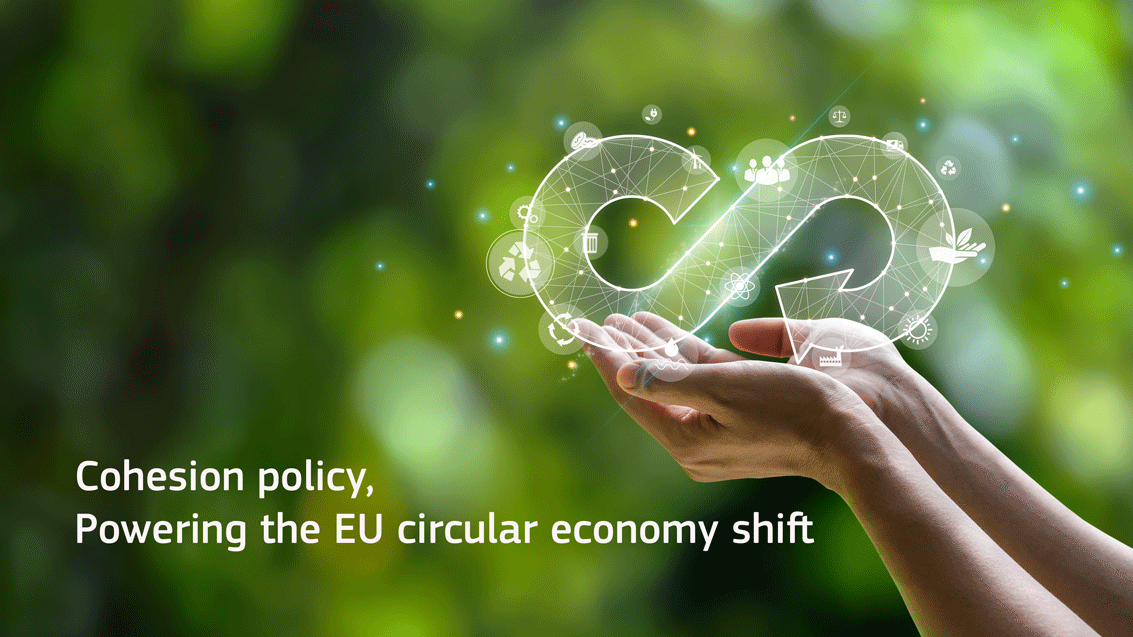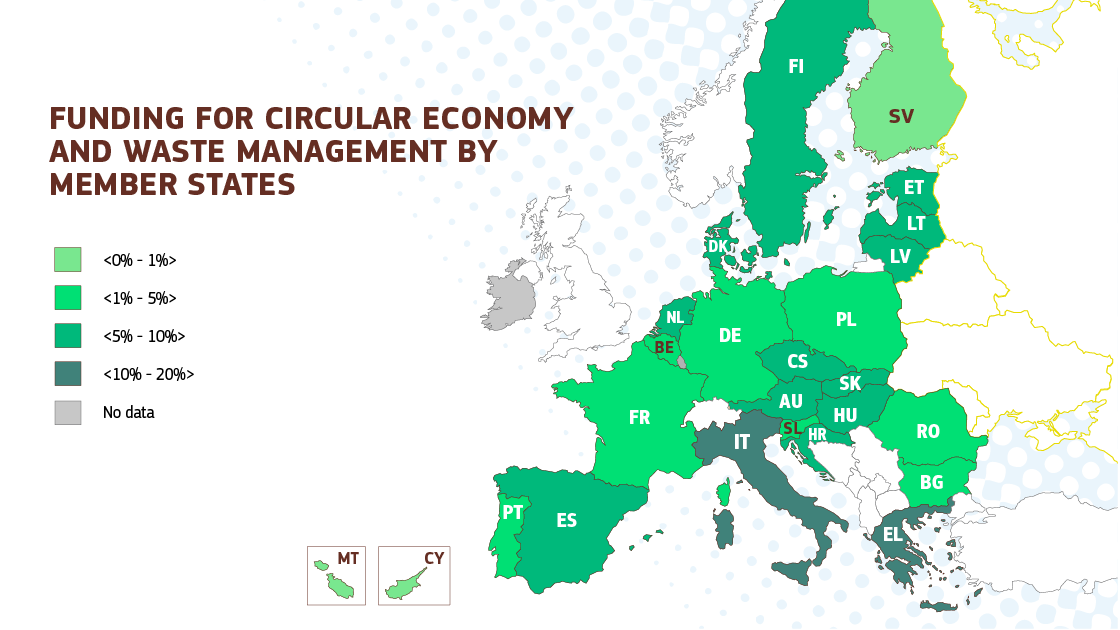
The European Union’s transition to a circular economy is a cornerstone of the European Green Deal and comes with concrete benefits such as reduced stress on natural resources and sustainable growth and consumption.
The shift is a prerequisite for cutting harmful emissions and reaching EU climate neutrality by 2050, as well as stemming the loss of biodiversity and protecting vital ecosystems. Amid geopolitical tensions and recent global trade disruptions, it will also help address concerns over Europe’s dependency on imported resources and access to raw materials.
With so much at stake, cohesion policy is key to putting the circular economy pivot into practice throughout the EU and ensuring that all regions reap the rewards. Reflecting this important role, the 2021-2027 programming period includes a planned €12.5 billion for both the circular economy and waste management, of which more than €8.6 billion was EU funding as of November 2023 (Cohesion policy: supporting the circular economy).
Refuse as a resource
The 2008 Waste Framework Directive established a so-called waste hierarchy, with prevention and preparing refuse for reuse at the top, followed by recycling and recovery. Disposal ranks last as the least desired option. With the goal of increasing Europe’s resource independence by helping to halt the outflow of valuable materials and support the development of alternatives to raw materials, the 2021-2027 cohesion policy investment framework gives priority to higher ranked levels. This also includes modernising or upgrading recycling and waste treatment infrastructure.
How countries compare
Overall, the European Regional Development Fund (ERDF) is the largest source of EU funding for circular economy and waste management, followed by the Cohesion Fund (CF), the Just Transition Fund (JTF) and Interreg funding. EU countries differ in how much they allocate nationally under cohesion policy in addition to EU funding. Italy is in the lead with more than €1.9 billion in overall funding followed by Greece with €1.5 billion, Poland with €1.1 billion and France with €932.9 million.
Investments for the circular economy and waste management are split into eight categories, with the highest allocations overall currently for household waste management, followed by environmentally friendly production processes in small and medium-sized enterprises (SMEs). Drilling down, Cyprus, Malta and Romania are examples of countries allocating the most to household waste management while Austria, Denmark and Slovenia are among those to allocate their largest shares – if not all – to SMEs.
Cohesion policy investments for 2021-2027 are already producing tangible results.
For example, JTF funding has supported 2.9 million tonnes of waste being used as raw materials so far.

Tackling food & textile waste
In the context of the circular economy’s focus on waste prevention and sustainability, the EU is currently considering a review of the Waste Framework Directive to alleviate food and textile waste.
Highlighting the urgency, more than 58 million tonnes of food and 12.6 million tonnes of textiles are thrown away in the EU each year, clogging landfills and causing significant strain on resources.
With the cost of collection and treatment of food waste totalling €9.3 billion while more than 37 million people in the EU cannot afford to eat a substantial meal every second day, the European Commission has proposed legally binding food waste reduction targets by 2030. These foresee food waste to be cut by 10 % in processing and manufacturing and 30 % per capita jointly at the retail level and in restaurants, food services and households.
For textiles, the Commission’s proposal includes making companies cover the costs of collecting, sorting and reusing or recycling discarded textiles through Extended Producer Responsibility (EPR) schemes — thereby providing incentives to design more eco-friendly products in the first place.

Innovative cross-border solution
Amid the need for action, cohesion policy funding has supported innovative projects that are helping to bring the circular economy to life while fostering cross-border cooperation and knowledge sharing.
One prime example from the 2014-2020 programming period is the Interreg
‘Strategies to Reduce Food Waste in Central Europe’ (STREFOWA) project, which developed a multilingual online tool to find food waste initiatives across Central Europe. Led by Austria’s ABF-BOKU Institute of Waste Management and Circularity, it also developed a food waste handbook, as well as factsheets and training materials, organised conferences and pilot actions, and held ‘hackathons’ to come up with ideas for apps and websites — all in a bid to bring about positive change. Total investment for the project was €2 363 175, with the European Regional Development Fund contributing € 1 938 349.